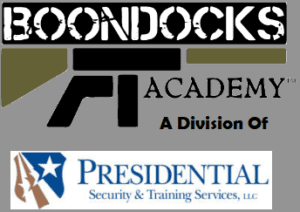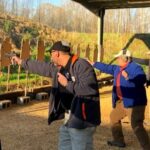Beyond the Gun: The Critical Importance of Holistic Firearms Training
Recently, my family and I wrapped up an epic road trip that included over 3,800 miles, 15 states (mostly in the Northeast), and Canada. I knew that several of the states had very strict gun laws, and if we planned to cross the border, a handgun was going to be a “no-go,” so I opted to leave the pistol at home.
While on our trip, I was also conversing with my friend and fellow instructor, John Roberts, who was also on a cross-country trip into Canada and had to leave his handgun at home. But that didn’t mean we were helpless. John and I have had the opportunity to train together extensively in the past, and we both knew the most important self-defense tool we had was the knowledge we gained from a multitude of firearms training classes.
After we both returned home, I reached out and asked John to help collaborate on this article. We hope you enjoy it and find it useful.
When Most People Think of Firearms Training…
When most people think of firearms training, they imagine time spent at the range, perfecting their accuracy and learning how to safely handle a firearm. While these are essential skills, good training classes go far beyond marksmanship. Some of the most important training I got in my “gun classes” focused on a holistic approach to firearms and concentrated on developing a mindset, and skillset, that prioritizes awareness, avoidance, and adaptability—not just the ability to shoot.
The Mindset: Winning Starts in the Mind
A defensive mindset is the foundation of all personal protection. It’s not about paranoia or aggression—it’s about mental readiness. The right mindset prepares individuals to stay calm under pressure, make quick decisions, and act with purpose. This includes understanding the legal and moral implications of using force and recognizing that the goal is always to avoid conflict whenever possible.
Situational Awareness: Your First Line of Defense
Situational awareness is the art of being present and observant. It means noticing exits when you enter a room, identifying potential threats before they escalate, and always being aware of your surroundings. Whether you’re walking through a parking lot or sitting in a restaurant, staying alert can help you avoid danger before it even begins.
Avoidance and De-escalation: The Smartest Fight is the One You Don’t Have
Avoidance is not cowardice—it’s wisdom. Recognizing a potentially dangerous situation and choosing to walk away is often the best outcome. De-escalation techniques, such as using calm body language and non-threatening communication, are vital tools in your defensive toolkit. These skills are especially important in civilian self-defense, where the consequences of a physical altercation can be life-altering.
Non-Lethal Tools: Options Between Harsh Words and Handguns
Firearms are not always the appropriate response. Non-lethal tools like pepper spray or even a tactical flashlight can provide effective means of defense without the permanence of lethal force. Training with these tools ensures you know how and when to use them, giving you graduated response options in a confrontation. Personally, I carried several non-lethal tools (pepper spray and tactical flashlights), a first aid kit with two tourniquets, and a couple of knives on me at all times.
Hand-to-Hand Combatives: When Things Get Close
Sometimes, you don’t have time to draw a weapon. That’s where hand-to-hand skills come in. You don’t have to be a martial arts master, but basic hand-to-hand techniques that teach how to break grips, escape holds, and defend yourself in close quarters are great skills to have and can usually be acquired without a lot of training time. Additionally, maintaining an adequate level of personal physical fitness is also a critical tool to prevent becoming a victim. Physical fitness increases confidence, sharpens awareness, and offers an advantage if the situation requires physical combat. These skills are also critical for firearm retention—ensuring your weapon doesn’t become a liability in a struggle.
Family Preparedness
Self-defense isn’t just an individual responsibility—it’s a family affair. Teaching children and loved ones about situational awareness and basic safety principles empowers them to protect themselves and fosters a culture of preparedness and mutual support. Having a plan and rehearsing likely scenarios with family members can also help minimize uncertainty during threatening situations.
Conclusion: A Holistic Approach to Personal Safety
Firearms training should never be one-dimensional. A truly prepared individual is not just a good shot—they are mentally resilient, situationally aware, physically capable, and legally informed.
By embracing a holistic approach to self-defense, you not only increase your chances of surviving a dangerous encounter—you also reduce the likelihood of ever needing to use force in the first place.
It is also very important to understand the laws concerning the use of force, carrying weapons (including knives), and, of course, the laws pertaining to firearms. This is particularly important when traveling across the U.S., into Canada, or anywhere outside one’s home state.
Good training classes go far beyond the gun and also include understanding how to deal with the aftermath of an event—whether it is a violent encounter or an accident. Not hesitating to call 911 during an emergency and training on how to interact with law enforcement officers and first responders as they arrive on scene is important.
Visit our website to look at all of our course offerings as well as our Events Page for upcoming training opportunities.

